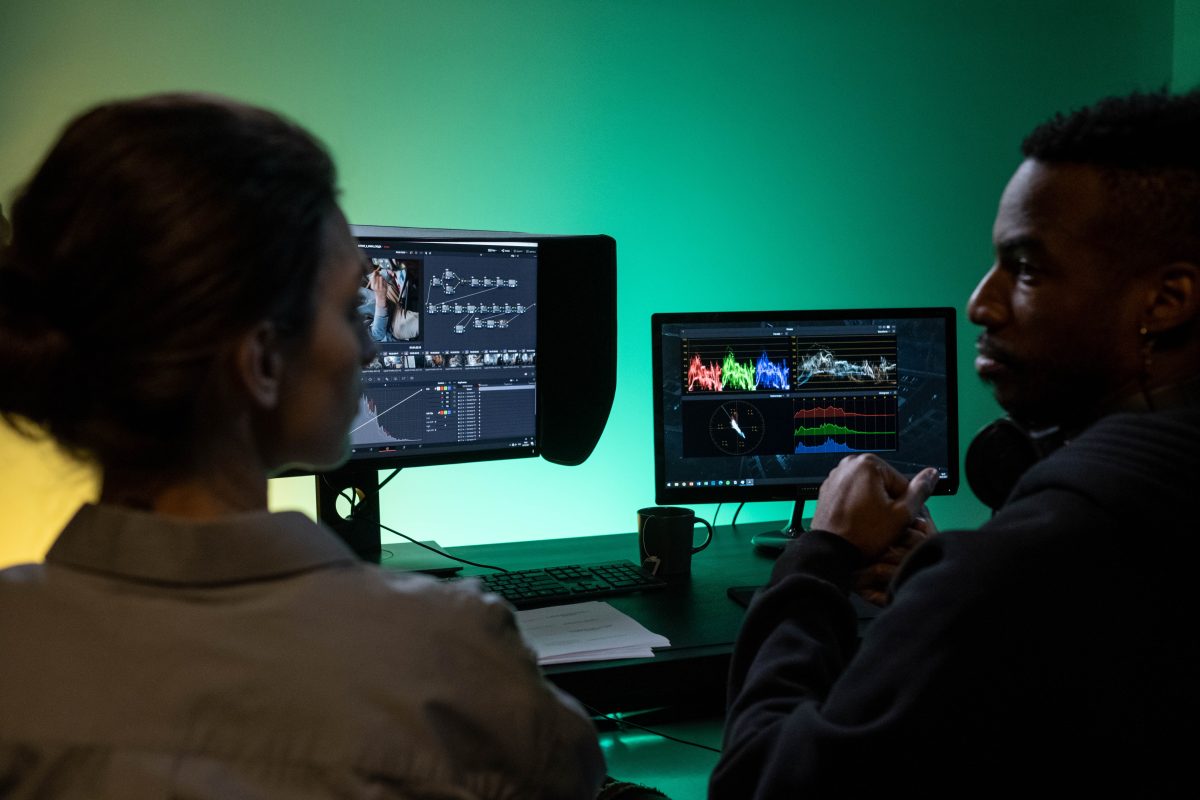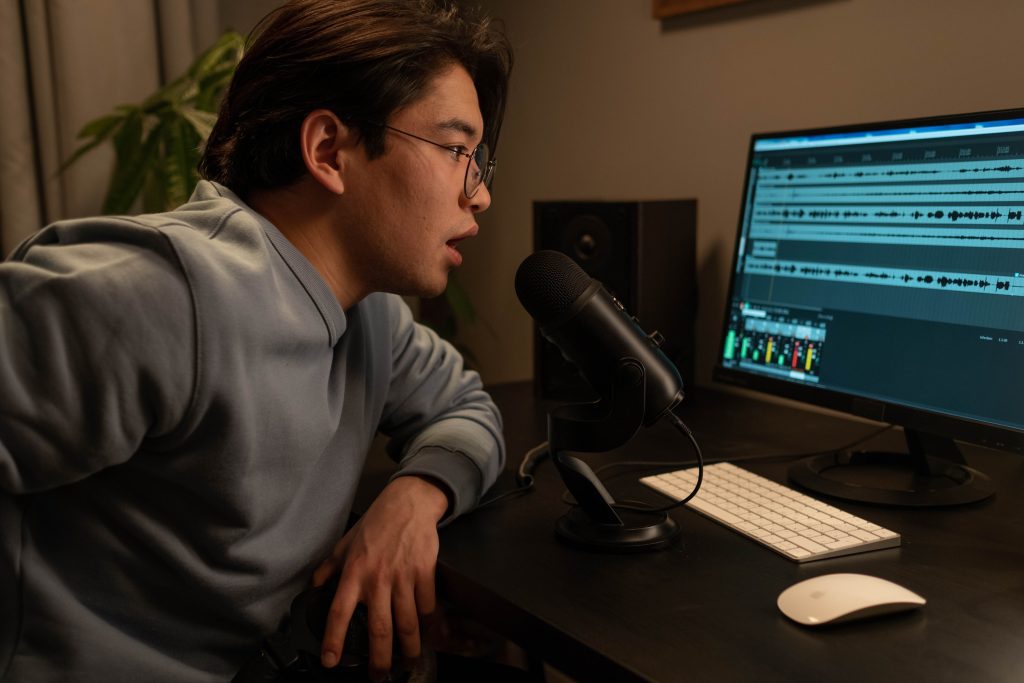Picture this: You’re in the studio, headphones on, feeling the beat – it’s pure magic. But something’s missing. You lay down the sickest guitar solo, but it needs a little more oomph. Maybe you’re thinking, “Can I clone myself just for this track?” Enter: Overdubbing, the music producer’s secret sauce for creating those thick, lush sounds that get your track popping! Curious to know more about overdubbing? Keep reading!
What is overdubbing? Overdubbing in music is a recording technique where a musician records apart, then records another part over it, creating a layered, rich sound.
What is overdubbing?
Overdubbing in music production is the process of recording additional tracks or parts onto an existing recording. It involves layering new musical elements, such as vocals, instruments, or effects, onto a previously recorded track to enhance or expand the overall sound of the composition.

Overdubbing is commonly used in various music genres to add depth, complexity, and texture to a song. It allows musicians and producers to create a fuller arrangement by adding new musical elements that may not have been present during the initial recording.
AKAI Professional MPK Mini MK3

AKAI Professional MPK Mini MK3
What’s the history of overdubbing in music production?
Overdubbing was first used in the 1920s by pioneers like Les Paul, an American jazz guitarist and inventor. Les Paul, also known as the ‘Wizard of Waukesha,’ was a true trailblazer in the world of music production. He invented the solid-body electric guitar and was one of the first to use multi-track recording – the precursor to modern overdubbing.
Fast forward to the 1960s and 70s, and overdubbing was becoming a staple in studios worldwide.
Fast forward to the 1960s and 70s, and overdubbing was becoming a staple in studios worldwide. Artists like The Beatles and Queen were pushing the boundaries of what was possible, using overdubbing to create complex harmonies and rich soundscapes.
And it wasn’t just rock and pop music that benefited from overdubbing. Jazz musicians like Bill Evans and Overton Berry used overdubbing to create intricate piano pieces, laying down multiple tracks to emulate the sound of a full jazz band.
Overdubbing isn’t some new-fangled invention. It’s a tried and true technique with roots that run deep in the history of music production. From Les Paul’s early experiments to The Beatles’ audio masterpieces, overdubbing has been shaping the sound of music for nearly a century.
How does overdubbing work?
Overdubbing starts with your original recording, often referred to as the ‘base’ or ‘backing’ track. This could be anything – a rhythm guitar part, a drum groove, even your main vocal line. Once you’ve got that solid foundation, you’re ready to build.
You record the additional parts over your backing track, syncing them up to create a harmonious whole. These ‘overdubs’ can be anything – harmonies, additional instruments, backing vocals, you name it. The beauty of overdubbing is that it lets you record each part separately, giving you the freedom to perfect each element of your track.
To help you avoid any stumbling blocks with overdubbing, here’s a little ‘dos and don’ts’ table:
| Dos | Don’ts |
|---|---|
| Do experiment with different sounds and layers | Don’t rush – take your time to get each part right |
| Do use a metronome to keep your tracks in sync | Don’t forget to save your work regularly |
| Do check your levels before recording each part | Don’t record in a noisy environment |
Why should you use overdubbing in your mix?
Overdubbing cranks the creative volume to 11, enabling musicians to layer sounds and create a full-bodied piece of music, even when you’re flying solo in your home studio. It’s a powerful tool for bringing your musical vision to life.
If your mix feels sonically thin or lacks complexity, overdubbing could be a useful technique. For instance, if your vocal track feels a little thin, you could overdub it with harmonies or double-tracked vocals to give it more weight. Or if your guitar solo feels a bit lonely, why not overdub it with a rhythm guitar or some ambient synth sounds?

Think about the legendary Queen anthem, “Bohemian Rhapsody.” Now, that’s a tune that wouldn’t exist without overdubbing. Freddie Mercury and the boys used this technique to build those majestic harmonies, creating a sonic experience that still gives us goosebumps decades later.
But, like any tool in music production, overdubbing isn’t a one-size-fits-all solution. It’s not about layering for the sake of layering but rather about enriching your track where it’s needed. So, before you start piling on the overdubs, take a step back and ask yourself: “Does this serve the song?” Because, at the end of the day, that’s what it’s all about – making the song the best it can be.
Advantages and disadvantages of overdubbing
Overdubbing, like any tool in your music production arsenal, has strengths and weaknesses. Let’s take a deep dive into the pros and cons of overdubbing.
The upside of overdubbing
Here are a few reasons why overdubbing rocks:
- It allows for creative layering of sounds and textures, adding depth to your tracks.
- It gives you the freedom to record each part separately, perfecting each element of your track.
- It enables solo artists or small bands to create a fuller sound, mimicking a larger ensemble.
- It allows for correcting mistakes without having to re-record the entire track.
The downside of overdubbing
And now, for the not-so-rosy side of overdubbing:
- Overuse can lead to over-complicated tracks, causing listener fatigue.
- It can be time-consuming, as each part needs to be recorded, edited, and mixed separately.
- It can lead to losing a performance’s live feel or natural ambiance.
- It requires careful level and phase matching to avoid unwanted noise or distortion.
If you want even more tips and insights, watch this video called “What is an Overdub?” from the Taylor Sound and Video YouTube channel.
Frequently asked questions (FAQ)
Do you still have questions about overdubbing? Below are some of the most commonly asked questions.
Can overdubbing be done live?
Technically, yes, but it’s more common in studio recordings. In a live setting, you might see a performer use a loop pedal to layer sounds in real time. This isn’t overdubbing in the traditional sense, but it achieves a similar effect.
Is overdubbing cheating?
Heck no! Overdubbing is a creative tool, not a shortcut. It’s all about enhancing your tracks and bringing your musical vision to life. Remember, the end goal is to make great music, not to follow some arbitrary rulebook.
What’s the difference between overdubbing and multi-tracking?
Multi-tracking is a form of overdubbing. It refers to the process of recording multiple parts separately and then combining them to create a full mix. Overdubbing is a broader term that includes any addition of sound after the initial recording.
Conclusion
Well, folks, we’ve hit the final note on our overdubbing journey. I hope it’s been as harmonious for you as a perfectly overdubbed vocal track! Did I cover everything you wanted to know? Let me know in the comments section below. I read and reply to every comment. If you found this article helpful, share it with a friend, and check out my full blog for more tips and tricks on music production. Thanks for reading, and keep those tracks grooving!
Key takeaways
This article covered the world of overdubbing in music production. Here are some key takeaways:
- Overdubbing is the process of recording additional parts onto an existing recording to enhance or alter the original track.
- Overdubbing techniques can range from adding backing vocals, harmonies, or additional instrumental tracks to layering sound effects or ambient noise.
- Overdubbing can add depth and complexity to your tracks, but it’s important to use it strategically and not over-complicate your mix.
- Many famous artists have used the history of overdubbing stretches back to the 1920s to create iconic songs.















